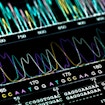
It is well established that homeostatic signaling systems interface with the mechanisms of developmental and learning-related plasticity to achieve stable yet flexible neural function and animal behavior. Experimental evidence from organisms as diverse as Drosophila, mice and humans demonstrates that homeostatic signaling systems stabilize neural function through the modulation of synaptic transmission, ion channel abundance and neurotransmitter receptor trafficking. At a fundamental level, if homeostatic plasticity is compromised, then the nervous system will be less robust to perturbation. As such, it is widely speculated that defective or maladaptive homeostatic plasticity will be relevant to the cause or severity of autism. However, clear molecular or genetic links between autism and homeostatic plasticity have yet to be defined in any organism.


